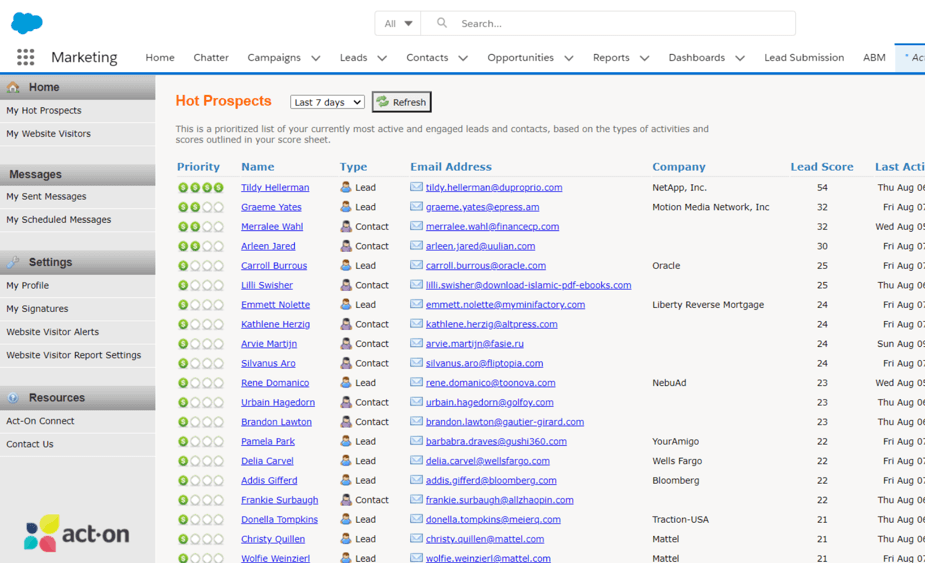Every day, the privacy needs of the average consumer are becoming more and more apparent. And, every day, the world’s largest companies are showing more concern for responding to these needs. At the same time, data remains one of the most crucial aspects of a successful marketing and sales program for any business. The good news is it’s still possible to responsibly gather first-party data as your leads and customers interact with your digital marketing content. The resulting data is critically important for sales success. Used properly, this marketing automation data enhances the sales conversation every time, because it provides the opportunity for personalized and targeted selling.
Using marketing automation data in conjunction with a clean and efficient CRM will help your company better meet the needs of your prospects and customers, and streamline the sales process. Let’s get into detail about marketing automation and CRM integration as a key part of your marketing and sales growth.
What is Marketing Automation Data?
Marketing automation, as you know, is a set of marketing actions that are interconnected, automated, and tracked. Common components of automated marketing programs include:
- Landing pages
- Forms (connected to both automation platform and CRM)
- Emails & SMS messages
- Social media posts
- Advertising
- Gated content
By observing and tracking interactions with these and other marketing elements, we build a better understanding of the people we’re trying to sell to. In a B2B environment, we can get a clearer vision into buyer intentions, and even aggregate details at the company level, when several people are involved in the search for a product or service for the same business. The types of information that are important to track in marketing automation include:
- Behaviors on the website
- Content the user interacted with
- Forms they filled out
- How long they viewed certain important pages
- Downloaded assets
- Event registrations
- Even (aggregate) heat maps to show page interaction
- Purchases
- Email behaviors (opens, click throughs, responses)
- Social media behaviors
- Ad interactions
- App activity
Marketing automation data can be accessed, displayed, and shared in different ways, depending on your MarTech stack. The key to success is making sure sales and marketing are aligned in purpose and process, that your tools are the right fit for your needs, and that they are configured properly. Your marketing is not really automated if you must manually pull and share crucial data that helps your sales team stay on point.
How Marketing Data Helps Sales Identify the Area of Interest
Marketing automation data can help you determine areas of interest to focus on in the sales process. Whether that’s a particular industry vertical, key features of your product, or other details you can gather from the user’s interaction with your website and content, determining an area of interest should be relatively easy with the right integration of marketing automation data into the sales process.
Marketing data can help you to determine areas of interest, including:
- Industry verticals
- Product features or service type
- Methodologies / strategies
- Marketing channels (SMS, Social Media, Website, Email)
Rather than a generic pitch, the data allows your automated marketing workflows to send the right message to the right buyer at the right time to nurture the relationship. Plus,salespeople can use the same data and insights to have better informed, more relevant conversations with buyers, and business development professionals can tailor the conversation to the area of interest right from the start. It’s a great way to focus a sales call, especially when it’s a first conversation with a live representative after having combed through content and research. Done right, the prospect will feel seen without getting the heebie jeebies.
It’s important to be subtle when gearing a sales conversation toward a specific area of interest apparent in the marketing automation data. It’s not a good idea to say “I see that you’ve interacted with this particular content,” for example. Rather, try: “XYZ incorporated, looks like you’re working in ABC industry, right? Have you started looking into channel X? Our other customers doing ABC have noticed a huge uptick in leads by focusing on X.”
Determine Prospect Readiness
Marketing automation data can determine which phase of the buyer’s journey the prospect is in, and how quickly a sale might be possible. The best salespeople will tell you, there’s no quicker way to kill momentum than to push too hard when the lead is not ready. And, second worst probably is not being aggressive enough when the lead is ready to buy.
Use key indicators of prospect readiness to build a lead scoring system in your marketing automation platform, and make sure that lead score can be seen and used within (or in conjunction with) your CRM.
Key indicators of prospect readiness that you can see in marketing data:
- Visited pricing page
- Watched an on-demand product demo
- Opened lots of emails
- Re-opened or replied to emails
- Downloaded bottom-of-the-funnel content
Sales professionals can use this type of data to assign the right resources and intensity to every lead. When it’s accessible directly from your CRM, the whole process works even better.
Uncover the Best Offer or Conversation Track for the Sales Call
Using marketing automation data to guide the way, your team can be even more laser focused in the B2B sales conversation. You can use information about industry, area of interest and readiness to really tailor the call. Marketing automation data can help you:
- Uncover the best offer
- Determine your best sales technique
- Figure out what pain points might still exist
- Ask the right questions
Close More Deals with Seamless CRM and Marketing Automation Integration
The bottom line is, your business will be able to grow even faster with the right approach to using marketing data in the sales conversation. Having the right marketing automation platform, properly integrated with the right CRM allows your marketing and sales teams to accomplish so much more. Streamlined sales conversations lead to a clearer conversion path, shortened sales cycles, and more deals closed.
No matter which CRM your team uses, marketing automation, and the ongoing flow of data it provides, is a crucial resource. If you’d like to read in more detail about a marketing automation and CRM integration, we recently wrote about Act-On’s partnership with Zendesk Sell here. It’s a perfect example of how marketing data can enhance the sales conversation in real time, and includes specifics of how to use different types of data.
Access Marketing Automation Data Inside Your CRM to Enhance Sales Success
The exact methods and capabilities of accessing marketing automation data inside your CRM will depend on what systems your team uses, and how they are configured and connected. The best scenario, of course, is a native integration, but there are many ways to connect, depending on whether your systems have an open API, or not.
Here are some examples of how Act-On connects with four different CRMs:
Zendesk Sell + Act-On
One of the most powerful marketing automation and CRM integration out there today is the native integration between Act-On and Zendesk Sell. With this connection, Act-On Software empowers Zendesk customers to seamlessly access a variety of behavioral data, templates and automated outreach tools (like SMS and email). Plus, the connection allows Zendesk Sell users to use Act-On to create, qualify, and nurture leads.

Salesforce + Act-On
Sales teams using Salesforce CRM can gain visibility, and identify the hottest prospects with the connection between Act-On marketing automation and Salesforce. This allows sales people to focus on the right leads at the right time, using marketing automation data to fill out the picture, and guide the conversation while maximizing customer lifetime value with funnel reports.

Microsoft Dynamics + Act-On
The integration between Microsoft Dynamics and Act-On creates the opportunity for total transparency into the customer profile, journey, and behaviors. Sales people use this connection to create a central command center for creating, managing, and tracking campaigns across multiple channels throughout the customer lifecycle.

SugarCRM + Act-On
Marketing and sales teams using the SugarCRM and Act-On integration to track and share performance across departments have told us this type of integrated data provides the platform from which they can analyze, pivot and grow.

Boost Sales Call Success with Marketing Automation Data
No matter what MarTech stack is in place for your sales and marketing teams, it is important to connect them. If that connection can be a deep, two-way, real-time sync, that’s best. Any data on your potential customer’s interests and behavior will be helpful for the sales conversation, because it allows the conversation to be uniquely tailored. Using marketing automation data in the sales process is one essential step toward business growth.
